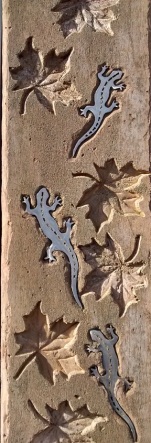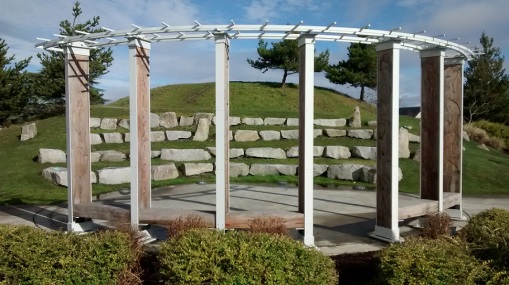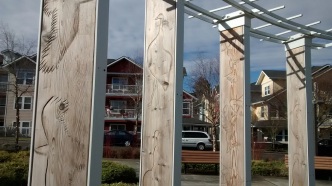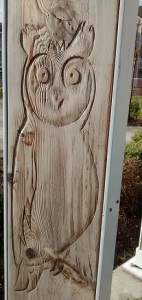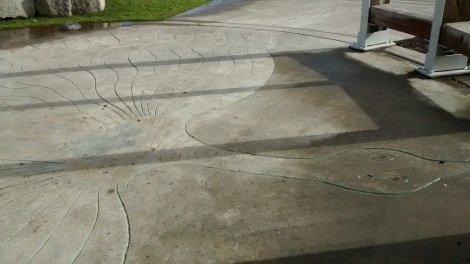 This is the cool, wet time of year when moss is at its best. Its emerald plumpness proclaims, “Look at me. My hyper green greenness demands that you see me.”
This is the cool, wet time of year when moss is at its best. Its emerald plumpness proclaims, “Look at me. My hyper green greenness demands that you see me.”
Against the grayest of gray days and the most muted tones of fallen logs and decaying leaves, moss paints the landscape with exuberant signs of life.
All green was vanished save of pine and yew, That still displayed their melancholy hue; Save the green holly with its berries red, And the green moss that o’er the gravel spread.
―George Crabbe
I like moss. Moss in my yard, moss on trees, moss on concrete, moss on brick. It drapes the concrete under my fencing. I invite it to spread across my yard, replacing the useless grass at every inch. I’ve gotten rid of most of my front lawn, instead having vegetable plots, a pollinator garden and drought-tolerant shrubs and natives. My yard is a wildlife sanctuary.
There is some moss on the ground, but I’d like more. It would save me from mowing or using mulch around my plantings.

Often overlooked or undervalued by the casual observer, mosses do serve important functions in nature. Classified as bryophytes, mosses help stabilize the soil, reduce evaporation of water and even provide food for some herbivores.
They take nutrients from the atmosphere and therefore can be indicators of air pollution.
One gram of moss from the forest floor, a piece about the size of a muffin, would harbour 150,000 protozoa, 132,000 tardigrades, 3,000 springtails, 800 rotifers, 500 nematodes, 400 mites, and 200 fly larvae. These numbers tell us something about the astounding quantity of life in a handful of moss.
― Robin Wall Kimmerer, author, Gathering Moss: A Natural and Cultural History of Mosses

But most of all, moss is nature’s way of reminding us that nature wins in the end. It conquers manmade surfaces. I like the way it decorates steps and benches and bridge supports. It makes them look like remnants of ancient civilizations and transforms my walks into brief visits to the past.

It is said that faeries sleep on beds of moss. I’ve never seen one, but I keep looking.
Hardware store shelves bulge with “Moss be Gone” and “Moss Out.” I say, keep your money and let the moss run wild!
This is the forest primeval. The murmuring pines and the hemlocks, Bearded with moss, and in garments green, indistinct in the twilight, Stand like Druids of eld, with voices sad and prophetic, Stand like harpers hoar, with beards that rest on their bosoms.
―Henry Wadsworth Longfellow




